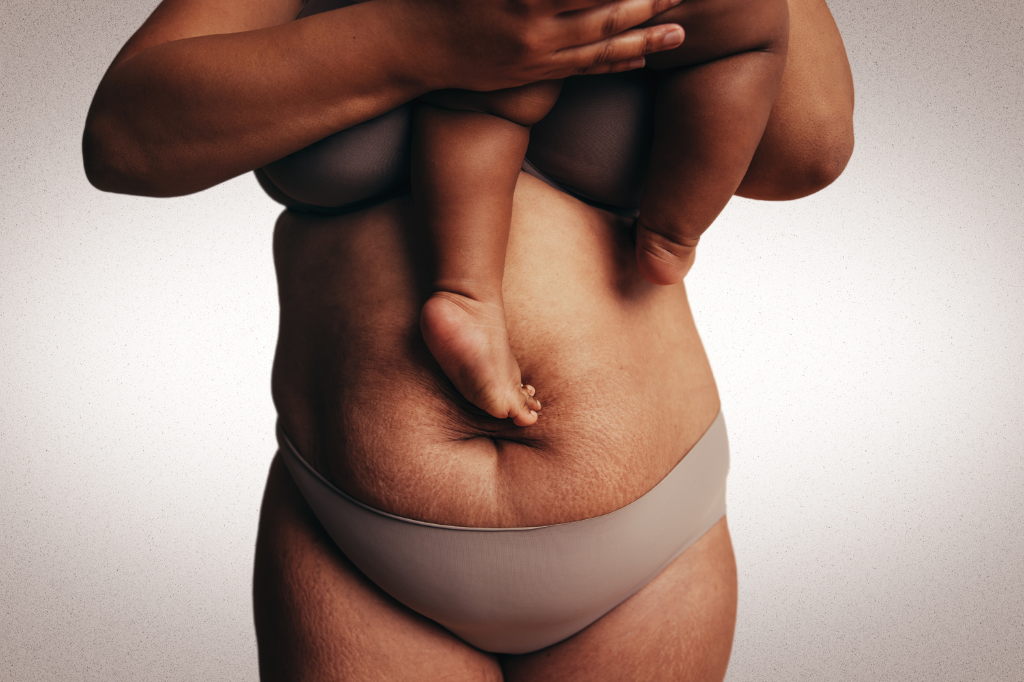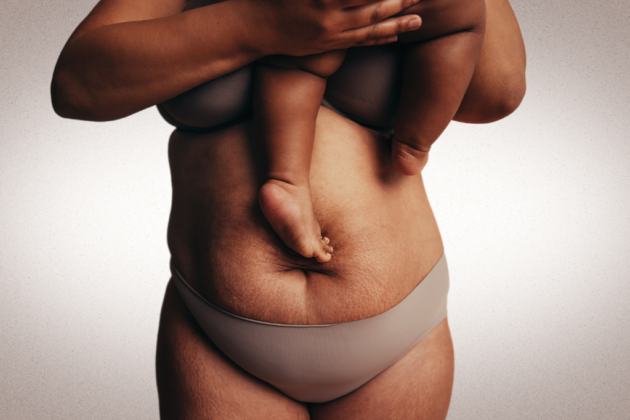Breastfeeding in the Hospital: Advocate for Yourself
Written by Mary Allers-Korostynski, RN BSN IBCLC RLC and Zaya Provider
Congratulations on your pregnancy! You’ve taken all the classes, had the baby showers, created your birth plan, and packed your hospital bag. Now you’re ready to have your baby and start breastfeeding in the hospital.
But what actually happens in the hospital, other than visitors and cute newborn photos?
Advocating for breastfeeding in the hospital begins before birth, in the form of prenatal breastfeeding education
Yes, breastfeeding is natural and we all know there are health benefits for both mom and baby. Did you know both you and your baby will need to learn different positions and how to latch? It will bring you so much comfort to learn about how your body makes milk, as well as signs of a good latch and milk intake, once the baby is here.
Prenatal breastfeeding education can be found in many different forms. Inquire at the hospital at which you plan to give birth if they have classes. La Leche League International has free meet ups that you can attend to learn about breastfeeding before and after the baby is born for support. You can also find a private practice lactation consultant for a one-on-one visit prenatally. That way, you will have someone for support that knows you once the baby is here. By the way, if you choose this option, make sure you see someone who is an International Board Certified Lactation Consultant (IBCLC). The term “lactation consultant” is a generic term and can be used by anyone. Once you’ve armed yourself with knowledge, you are ready to put all that you have learned into practice when the baby is delivered!
Another important way you can advocate for breastfeeding in advance is carefully choosing a pediatrician
It’s well within your right to interview pediatricians before choosing one. When meeting with a pediatrician, ask how they feel about breastfeeding. Ask if they have an IBCLC that they refer to (or on staff) so their patients can have their feeding concerns addressed. As with any specialty, knowing when to refer is critical. It’s important to acknowledge that something is not your specialty and then collaborate with other professionals to meet the needs of the patients.
Breastfeeding in the hospital: the bottom line
As best you can, the goal is to get the baby fed and to protect your milk supply without going to formula right off the bat. When a baby receives formula, they don’t feed as easily at the breast. In order to increase milk supply, you need to remove milk! Oftentimes, women feel very strongly about breastfeeding their baby – but if it is mismanaged in the beginning it can have a negative impact on milk supply…and your confidence as a mom and woman. Let’s breakdown the first few days of postpartum, so you can learn how to advocate for breastfeeding in the hospital.
Visitors while breastfeeding in the hospital
Any provider on a hospital postpartum floor will agree that limiting visitors is a great idea – and completely within your right. Not just during cold and flu season, either (which would make a good excuse!). This is a very special time for you, your baby, and your support person to enjoy.
Yes, Grandma and Grandpa might not be very happy…but they can be helpful in other ways, like readying your home and preparing meals. In my experience, I’ve seen 7-10 visitors in a postpartum room and a baby showing signs of hunger, but mom is too new and unsure of herself breastfeeding to feed in front of Uncle Charlie. Then, the baby has to wait until after the visitors leave to feed – that’s not ideal. Your nurse’s advice would be to nap if you have the time, rather than entertain. They can be the “bad guy” and clear the room for you if needed.
Breastfeeding in the hospital on the sleepy day: 0-24 hours of age
Whether the birth was vaginal or c-section, your baby is going to be very sleepy the first day. If the baby delivered quickly, if pushing was extended, or if the baby is 37 weeks or earlier, this sleepiness will be compounded. Because of this, skin contact with mom is so important. Most of your time should be spent with the baby on your chest with their head within kissing distance. We call this the “breastaurant”! Keeping your baby skin to skin helps regulate heart rate, respirations, blood sugar, and temperature. Skin to skin means the baby is in a diaper on mom’s bare chest, with a blanket over both.
Hand Expression: What is it, exactly?
Additionally, you can hand express frequently during this time and feed the baby by spoon. Hand expression means removing milk by hand into a spoon to be fed to the baby. For some women hand expression works well, but if you have a lot of fluid from IVs it may be more difficult. Hopefully you will have learned hand expression in your prenatal breastfeeding class, or your nurse can show you.
The evidence-based recommendation is to feed the baby when they show feeding cues. These cues include: hands in the mouth, moving their mouth, or turning the head to the side. Contrary to popular belief, crying is actually considered a late feeding cue. If you feed only when they cry, this is called feeding on demand. It means feedings are not evenly spaced, which is generally considered every 3 hours. That said, it would be great if babies fed on a schedule – but they only know when they’re hungry and to show you when that is. Watch your baby, not the clock!
How do you know if your baby is getting enough?
The best way to know if your baby is getting enough milk is by keeping track of wet and dirty diapers (one of each on day one, two of each on day two) and if the baby feeds eight or more feedings in 24 hours. The caveat is that on the first day, because of the sleepiness, your baby probably will only feed 6-8 times – and that’s okay.
Breastfeeding in the hospital on the fussy feeding day: 24-48 hours of age
The second day of a baby’s life, they are more awake and as you get closer to the second night of life, hang on! As sleepy as they were on the first day, they make up for it the second night. This night is filled with cluster feeding and fussiness. Because of this, moms think they don’t have enough milk – but this is completely normal newborn behavior.
At this point, you may be tempted to give a pacifier. Because cluster feeding is a natural process to increase milk supply, using a pacifier can interrupt this. You can also experience nipple confusion, because a baby sucks on a pacifier differently than at the breast and it’s difficult for them to switch back and forth between those two skills. It is recommended to wait until 4-6 weeks to use a pacifier, if at all.
Medical tests that impact breastfeeding in the hospital
When your baby is 24 hours old, several tests will be performed. Bilirubin and weight loss are important levels that will be checked, and related to the baby feeding. If findings are not within normal limits there is an inclination to give formula prematurely – and sometimes unnecessarily. At this point, this is the time to make sure measures taken are protective of breastfeeding. Below, we’ll dive into each scenario.
Bilirubin
After birth, babies have extra red blood cells that they received from mom. The red blood cells break down and the bilirubin released from these cells causes jaundice, or yellowing of the skin, and has to be excreted in the feces or broken down by the liver. Sometimes babies don’t poop a lot on the first day because their liver is immature, and the bilirubin level is slower to resolve. This just means that the baby needs to feed more. To remedy this, put the baby skin to skin more and try to rouse them by hand expression. I also recommend phototherapy while the baby is skin to skin, prior to supplementing with formula. Also, starting to pump until milk becomes mature can help. (Milk transitions from colostrum to transitional milk to mature milk. It does not “come in”).
Weight Loss
When you’re in labor and getting IV fluids, so is your baby! In the first few days you and the baby will start to release some of the fluid, which can lead to weight loss. Also, if your baby has pooped a lot, that affects weight. In the hospital your provider will assess the amount lost. Every baby loses weight, but if it starts to get closer to l0% of their birth weight, try hand express more often. That said, be alert if the baby’s 24 hour weight shows a close to 10% weight loss and question the scale of the initial weight. It is impossible to lose 10% of birth weight in 24 hours.
Supplementing with formula: Should you or shouldn’t you?
If your baby’s bilirubin level is above 6 or weight loss is approaching 10%, your provider may suggest supplementing with formula. Depending on the provider, they may choose to treat these situations different. It’s important to choose a pediatrician who supports breastfeeding to align with your goals. This is really when advocating for breastfeeding in the hospital comes into play.
In some cases, it may be necessary to supplement with formula. Rather than immediately starting formula, ask if you can hand express and pump until your milk transitions to mature milk. If your provider still recommends formula, only 5-10cc at a time is necessary due to the size of their stomach. Consider requesting a supplemental nursing system (SNS) as well, to avoid nipple confusion.
Special circumstances
Of course, every mom and baby are individuals with their own circumstances to be considered. The purpose of this blog is to educate you, so you can ask the right questions if breastfeeding in the hospital is important to you. That way, you’re equipped with the knowledge to make informed choices. Flexibility is still necessary, because of all of the complexity of the new mother-baby dynamic.
These are some special circumstances to be aware of:
- High bilirubin level and/or Coombs + baby: If a baby is Coombs+, that means there is a disparity between the mom and baby’s blood type, and the baby is at higher risk of jaundice. Since the bilirubin level tends to increase more quickly in a Coombs + situation, interventions such as phototherapy or supplementing with formula are more warranted. Continue to make sure you’re pumping and as your milk volumes increase the amount of formula should decrease.
- Neonatal Intensive Care Unit: If your baby is admitted to the NICU, you should immediately begin pumping to stimulate your milk supply for your baby. Inquire if your hospital has donor breast milk to be used until your volumes increase. Hold your baby skin to skin as soon as possible and direct breastfeed when possible.
- Preterm: If your baby is born prior to 37 weeks gestation, they are at higher risk for low blood sugar (see below) and jaundice. Early babies are also sleepier and harder to rouse to feed. Skin to skin is especially critical for these babies.
- Blood sugar checks: If you had gestational diabetes or your baby was small for gestational age (SGA) or large for gestational age (LGA) your baby will have their blood sugar checked prior to each feed for the first 24 hours. Remember, skin to skin helps regulate blood sugar. If the blood sugar is on the lower end you can hand express colostrum to feed the baby.
Your breastfeeding journey
Once you are discharged from the hospital, make an appointment with a lactation consultant for the first week of life. Knowledge is power. Educating yourself about the very early postpartum period will help you navigate a world that is unfamiliar to you, and often formula-focused. Not every provider is well versed in the finer points of establishing breastfeeding. That’s okay, as long as you find your tribe—like-minded professionals, family, friends—who will help you achieve your breastfeeding goals. Breastfeeding is more than nutrition. It is a style of parenting that helps your baby acclimate to the outside world with you as a guide and home base.
At Zaya, we make it easy to find pregnancy and postpartum care covered by insurance. To book an appointment with Mary, click here.
Written by Mary Allers-Korostynski, RN BSN IBCLC RLC and Zaya Provider
Congratulations on your pregnancy! You’ve taken all the classes, had the baby showers, created your birth plan, and packed your hospital bag. Now you’re ready to have your baby and start breastfeeding in the hospital.
But what actually happens in the hospital, other than visitors and cute newborn photos?
Advocating for breastfeeding in the hospital begins before birth, in the form of prenatal breastfeeding education
Yes, breastfeeding is natural and we all know there are health benefits for both mom and baby. Did you know both you and your baby will need to learn different positions and how to latch? It will bring you so much comfort to learn about how your body makes milk, as well as signs of a good latch and milk intake, once the baby is here.
Prenatal breastfeeding education can be found in many different forms. Inquire at the hospital at which you plan to give birth if they have classes. La Leche League International has free meet ups that you can attend to learn about breastfeeding before and after the baby is born for support. You can also find a private practice lactation consultant for a one-on-one visit prenatally. That way, you will have someone for support that knows you once the baby is here. By the way, if you choose this option, make sure you see someone who is an International Board Certified Lactation Consultant (IBCLC). The term “lactation consultant” is a generic term and can be used by anyone. Once you’ve armed yourself with knowledge, you are ready to put all that you have learned into practice when the baby is delivered!
Another important way you can advocate for breastfeeding in advance is carefully choosing a pediatrician
It’s well within your right to interview pediatricians before choosing one. When meeting with a pediatrician, ask how they feel about breastfeeding. Ask if they have an IBCLC that they refer to (or on staff) so their patients can have their feeding concerns addressed. As with any specialty, knowing when to refer is critical. It’s important to acknowledge that something is not your specialty and then collaborate with other professionals to meet the needs of the patients.
Breastfeeding in the hospital: the bottom line
As best you can, the goal is to get the baby fed and to protect your milk supply without going to formula right off the bat. When a baby receives formula, they don’t feed as easily at the breast. In order to increase milk supply, you need to remove milk! Oftentimes, women feel very strongly about breastfeeding their baby – but if it is mismanaged in the beginning it can have a negative impact on milk supply…and your confidence as a mom and woman. Let’s breakdown the first few days of postpartum, so you can learn how to advocate for breastfeeding in the hospital.
Visitors while breastfeeding in the hospital
Any provider on a hospital postpartum floor will agree that limiting visitors is a great idea – and completely within your right. Not just during cold and flu season, either (which would make a good excuse!). This is a very special time for you, your baby, and your support person to enjoy.
Yes, Grandma and Grandpa might not be very happy…but they can be helpful in other ways, like readying your home and preparing meals. In my experience, I’ve seen 7-10 visitors in a postpartum room and a baby showing signs of hunger, but mom is too new and unsure of herself breastfeeding to feed in front of Uncle Charlie. Then, the baby has to wait until after the visitors leave to feed – that’s not ideal. Your nurse’s advice would be to nap if you have the time, rather than entertain. They can be the “bad guy” and clear the room for you if needed.
Breastfeeding in the hospital on the sleepy day: 0-24 hours of age
Whether the birth was vaginal or c-section, your baby is going to be very sleepy the first day. If the baby delivered quickly, if pushing was extended, or if the baby is 37 weeks or earlier, this sleepiness will be compounded. Because of this, skin contact with mom is so important. Most of your time should be spent with the baby on your chest with their head within kissing distance. We call this the “breastaurant”! Keeping your baby skin to skin helps regulate heart rate, respirations, blood sugar, and temperature. Skin to skin means the baby is in a diaper on mom’s bare chest, with a blanket over both.
Hand Expression: What is it, exactly?
Additionally, you can hand express frequently during this time and feed the baby by spoon. Hand expression means removing milk by hand into a spoon to be fed to the baby. For some women hand expression works well, but if you have a lot of fluid from IVs it may be more difficult. Hopefully you will have learned hand expression in your prenatal breastfeeding class, or your nurse can show you.
The evidence-based recommendation is to feed the baby when they show feeding cues. These cues include: hands in the mouth, moving their mouth, or turning the head to the side. Contrary to popular belief, crying is actually considered a late feeding cue. If you feed only when they cry, this is called feeding on demand. It means feedings are not evenly spaced, which is generally considered every 3 hours. That said, it would be great if babies fed on a schedule – but they only know when they’re hungry and to show you when that is. Watch your baby, not the clock!
How do you know if your baby is getting enough?
The best way to know if your baby is getting enough milk is by keeping track of wet and dirty diapers (one of each on day one, two of each on day two) and if the baby feeds eight or more feedings in 24 hours. The caveat is that on the first day, because of the sleepiness, your baby probably will only feed 6-8 times – and that’s okay.
Breastfeeding in the hospital on the fussy feeding day: 24-48 hours of age
The second day of a baby’s life, they are more awake and as you get closer to the second night of life, hang on! As sleepy as they were on the first day, they make up for it the second night. This night is filled with cluster feeding and fussiness. Because of this, moms think they don’t have enough milk – but this is completely normal newborn behavior.
At this point, you may be tempted to give a pacifier. Because cluster feeding is a natural process to increase milk supply, using a pacifier can interrupt this. You can also experience nipple confusion, because a baby sucks on a pacifier differently than at the breast and it’s difficult for them to switch back and forth between those two skills. It is recommended to wait until 4-6 weeks to use a pacifier, if at all.
Medical tests that impact breastfeeding in the hospital
When your baby is 24 hours old, several tests will be performed. Bilirubin and weight loss are important levels that will be checked, and related to the baby feeding. If findings are not within normal limits there is an inclination to give formula prematurely – and sometimes unnecessarily. At this point, this is the time to make sure measures taken are protective of breastfeeding. Below, we’ll dive into each scenario.
Bilirubin
After birth, babies have extra red blood cells that they received from mom. The red blood cells break down and the bilirubin released from these cells causes jaundice, or yellowing of the skin, and has to be excreted in the feces or broken down by the liver. Sometimes babies don’t poop a lot on the first day because their liver is immature, and the bilirubin level is slower to resolve. This just means that the baby needs to feed more. To remedy this, put the baby skin to skin more and try to rouse them by hand expression. I also recommend phototherapy while the baby is skin to skin, prior to supplementing with formula. Also, starting to pump until milk becomes mature can help. (Milk transitions from colostrum to transitional milk to mature milk. It does not “come in”).
Weight Loss
When you’re in labor and getting IV fluids, so is your baby! In the first few days you and the baby will start to release some of the fluid, which can lead to weight loss. Also, if your baby has pooped a lot, that affects weight. In the hospital your provider will assess the amount lost. Every baby loses weight, but if it starts to get closer to l0% of their birth weight, try hand express more often. That said, be alert if the baby’s 24 hour weight shows a close to 10% weight loss and question the scale of the initial weight. It is impossible to lose 10% of birth weight in 24 hours.
Supplementing with formula: Should you or shouldn’t you?
If your baby’s bilirubin level is above 6 or weight loss is approaching 10%, your provider may suggest supplementing with formula. Depending on the provider, they may choose to treat these situations different. It’s important to choose a pediatrician who supports breastfeeding to align with your goals. This is really when advocating for breastfeeding in the hospital comes into play.
In some cases, it may be necessary to supplement with formula. Rather than immediately starting formula, ask if you can hand express and pump until your milk transitions to mature milk. If your provider still recommends formula, only 5-10cc at a time is necessary due to the size of their stomach. Consider requesting a supplemental nursing system (SNS) as well, to avoid nipple confusion.
Special circumstances
Of course, every mom and baby are individuals with their own circumstances to be considered. The purpose of this blog is to educate you, so you can ask the right questions if breastfeeding in the hospital is important to you. That way, you’re equipped with the knowledge to make informed choices. Flexibility is still necessary, because of all of the complexity of the new mother-baby dynamic.
These are some special circumstances to be aware of:
- High bilirubin level and/or Coombs + baby: If a baby is Coombs+, that means there is a disparity between the mom and baby’s blood type, and the baby is at higher risk of jaundice. Since the bilirubin level tends to increase more quickly in a Coombs + situation, interventions such as phototherapy or supplementing with formula are more warranted. Continue to make sure you’re pumping and as your milk volumes increase the amount of formula should decrease.
- Neonatal Intensive Care Unit: If your baby is admitted to the NICU, you should immediately begin pumping to stimulate your milk supply for your baby. Inquire if your hospital has donor breast milk to be used until your volumes increase. Hold your baby skin to skin as soon as possible and direct breastfeed when possible.
- Preterm: If your baby is born prior to 37 weeks gestation, they are at higher risk for low blood sugar (see below) and jaundice. Early babies are also sleepier and harder to rouse to feed. Skin to skin is especially critical for these babies.
- Blood sugar checks: If you had gestational diabetes or your baby was small for gestational age (SGA) or large for gestational age (LGA) your baby will have their blood sugar checked prior to each feed for the first 24 hours. Remember, skin to skin helps regulate blood sugar. If the blood sugar is on the lower end you can hand express colostrum to feed the baby.
Your breastfeeding journey
Once you are discharged from the hospital, make an appointment with a lactation consultant for the first week of life. Knowledge is power. Educating yourself about the very early postpartum period will help you navigate a world that is unfamiliar to you, and often formula-focused. Not every provider is well versed in the finer points of establishing breastfeeding. That’s okay, as long as you find your tribe—like-minded professionals, family, friends—who will help you achieve your breastfeeding goals. Breastfeeding is more than nutrition. It is a style of parenting that helps your baby acclimate to the outside world with you as a guide and home base.
At Zaya, we make it easy to find pregnancy and postpartum care covered by insurance. To book an appointment with Mary, click here.











